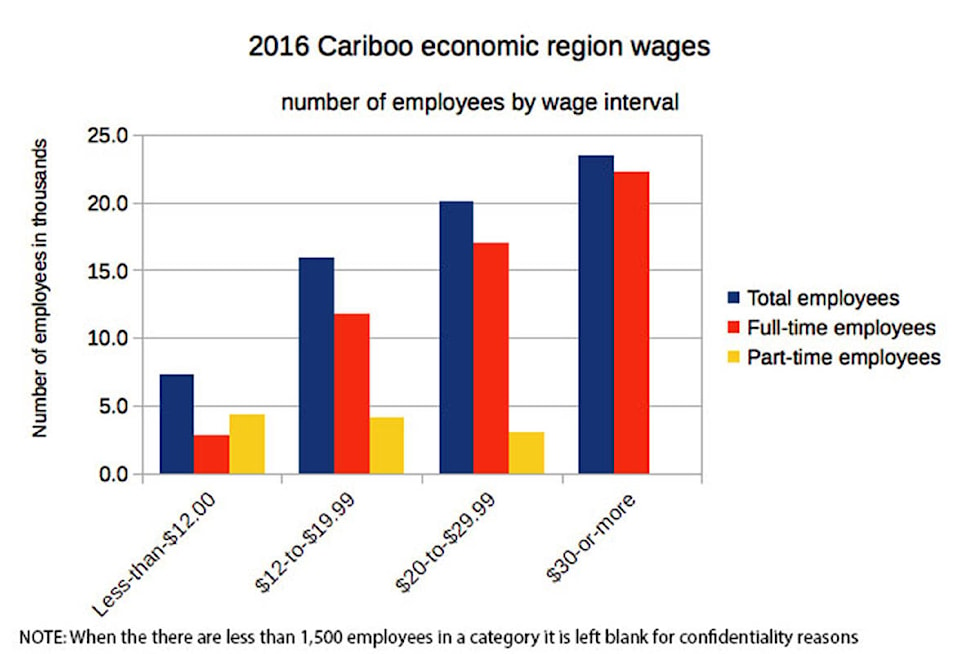On June 22, we reported that according to Statistics Canada Cariboo wages were on par with Canada. Following feedback, we asked Statistics Canada for a further breakdown.
The percentage of people earning $30 or more per hour in the Cariboo economic region (Cariboo Regional District (CRD) and the Regional District of Fraser-Fort George) grew by 14.7 per cent from 2012 to 2016 (from 20,400 to 23,400) while the number of people earning $12 per hour or less, dropped by 27.7 per cent (from 10,100 to 7,300) according to Statistics Canada data (Labour Force Survey). This notably excludes self-employed people.
When we asked for a CRD specific breakdown, a media representative from Statistics Canada said they could only provide data for the Cariboo economic region.
The changes accompanied an overall decrease in the number of employees from 71,200 to 66,700 in the Cariboo economic region (excl. self-employed).
The overall unemployment rate during that time increased slightly from 7.0 per cent in January 2012 to 7.4 per cent in December 2016 in the Cariboo (CRD only with large month fluctuations).
In the Cariboo economic region as a whole, average wages increased from $24.11 per hour in 2012 to $26.03 per hour in 2016 (excl. self-employed).
There was a substantial difference between full and part-time employees, with full-time employees earning an average of $27.91 per hour in 2016 and part-time employees earning an average of $18.23 per hour (variances with the June 22 story are because the data is from two separate surveys).
In 2016, the 66,700 total employees (excl. self-employed), broke down as follows: 7,300 earned $12 or less per hour (10.9 per cent), 15,900 earned $12 to $19.99 per hour (23.8 per cent), 20,100 earned $20 to $29.99 per hour (30.1 per cent) and 23,400 earned more than $30 per hour (35.1 per cent).
Cariboo-Chilcotin MLA Donna Barnett said, “It’s very hard to analyse down to this big huge region.”
“Every job is something we all strive for. As far the ability to pay people, the employer, I still believe because I’ve been in small business, pays what they can to keep their employees and it’s not just the dollars an hour that we have to look at” but also benefits and the costs to the employer of that added value.
Barnett added that it’s also hard to say anything about the difference between full-time and part-time wages as they may not be the same type of jobs.
She did say that there should not be such a big gap if they are the same types of jobs with employees who have the same type of experience.
We did not have the data yet for years prior to 2016 or the unemployment rate at the time we spoke to Barnett.
